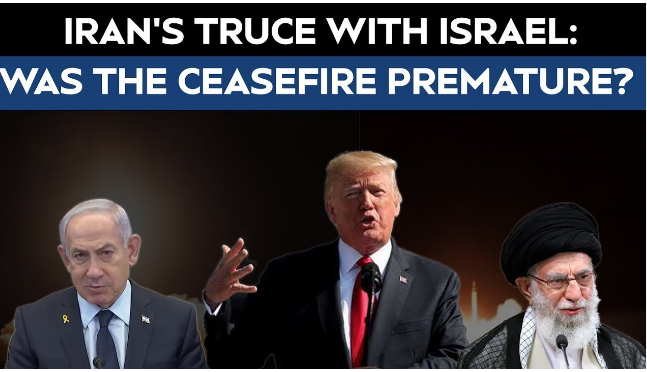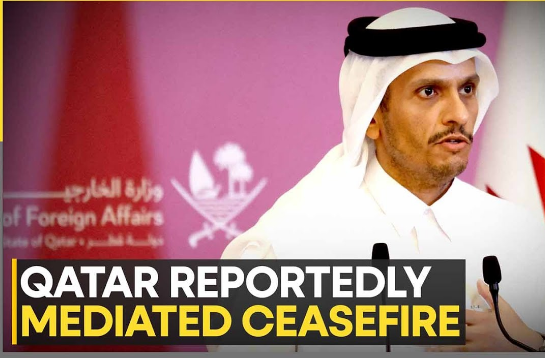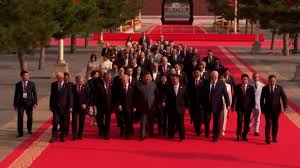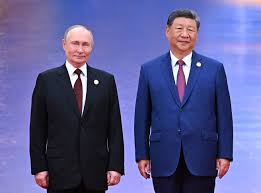
By June 2025, conflicts among Iran, Israel, and the United States surged quickly after reported airstrikes on Iranian nuclear sites. The world observed with increasing concern as Iran struck back vigorously, and a wider regional conflict appeared unavoidable. However, in an unexpected twist, a ceasefire was declared — resulting in a short pause to the pattern of escalation.
This piece examines the events that unfolded, Iran’s reaction, the circumstances that resulted in the ceasefire, and the implications for both the region and the global landscape ahead.
Context: American and Israeli Attacks on Iran
The crisis started when former U.S. President Donald Trump asserted that the U.S. had “ruined” Iran’s nuclear facilities, including Natanz, Fordow, and Arak.
These facilities were vital for Iran’s uranium enrichment and heavy water production — crucial stages in the possible development of nuclear weapons.
Trump declared on Truth Social that the step was precautionary and intended to stop Iran from approaching the capability to obtain a nuclear weapon.
At the same time, Israel allegedly initiated synchronized airstrikes aimed at Iran’s military facilities in Damascus and central Iran. The assaults reportedly included sophisticated drones, cyber operations, and bunker-busting weapons.
Iran’s Response to Retaliation
Iran characterized the airstrikes as “acts of war” and pledged “swift and strong retaliation.” In just a few hours, Iran fired several ballistic missiles in the direction of:
Israeli military installations situated in the Negev desert.
A military installation of the United States in Qatar.
Oil infrastructure situated near the Strait of Hormuz.
While the missiles resulted in minimal physical destruction and allegedly no injuries, their symbolic and strategic significance was considerable. Iranian authorities claimed that the assault was “calibrated” to deliver a warning without provoking a full-blown war.
“This serves as a caution to all attackers.” Iran will not back down if its sovereignty is challenged once more.
The Declaration of Ceasefire
At the moment when the situation was close to escalating into regional conflict, an unexpected statement was made on June 23, 2025. Donald Trump declared in a news conference:
“Iran and Israel have reached an agreement for a ceasefire.” Both parties recognize the risks involved, and we have assisted in establishing a temporary truce.
Diplomatic sources indicate that Oman and Switzerland served as unofficial mediators. Reports indicate that the United Nations and multiple EU countries urged both Iran and Israel to reduce tensions.

The conditions of the truce consist of:
Prompt cessation of aerial bombardments and missile firings.
No additional targeting of military or nuclear facilities.
Accord to restart indirect talks under UN oversight.
Although the ceasefire is not lasting, it marks a significant retreat from the possibility of an all-out war.
Worldwide Responses
The globe responded with a blend of relief and wariness:
Nations United: “We support the truce and call on all parties to engage in discussions.”
Unión Europea: “Este momento debe utilizarse para reiniciar conversaciones nucleares significativas.”
China and Russia: Condemned the U.S. and Israel for breaching international standards.
Saudi Arabia and UAE: Approved the ceasefire, concerned about instability in the Gulf.
The Israeli Prime Minister stated that Israel stays “alert” and “prepared to respond again if challenged.” Iranian officials referred to the ceasefire as a “strategic pause” rather than capitulation.
Implications for the Military and Politics
Although the conflict has ceased, tensions continue to be extremely elevated. Specialists caution that:
Iran might covertly restart nuclear operations, out of sight from the global community.
Israel may launch another attack if it thinks Iran is advancing toward acquiring a weapon.
The U.S. impact in the Middle East has increased for a time, particularly due to Trump’s involvement.
Gulf nations might increase their defense systems in light of growing uncertainty.
This short period of peace might also have political motivations. Trump’s participation in the ceasefire might be intended to enhance his global standing before a potential 2028 presidential run.
Public Opinion
Within Iran, responses vary. Some perceive the retaliation as a legitimate defense of sovereignty, whereas others wonder if the government conceded too quickly. In Israel, leaders face political pressure for not “completing the task.” In the United States, public sentiment is polarized — some celebrate the strikes as pivotal, while others caution against irresponsible escalation.
Conclusion
Iran’s rapid counteraction and the later truce have, for the moment, steered the area away from the brink of conflict.However, the fundamental problems persist without a solution.
Will Iran persist with its underground nuclear aspirations?
Is Israel able to hold back from taking additional measures?
Will the U.S. serve as a mediator or a provocateur in the region?
The weeks ahead will be vital. With delicate peace at stake, the international community must advocate for ongoing diplomacy — before another spark leads to a conflagration that might consume the Middle East and more.



“Is this actually true? This changes everything if confirmed!”check
this out 👇👉👉👉👉👉 xenixnews.com